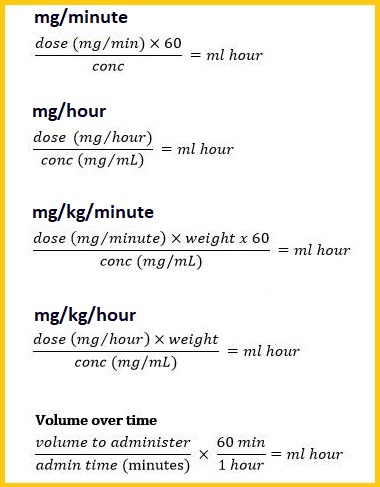

 Dosage Calculator
Dosage Calculator
This medication administration tool will help you to perform accurate dosage calculations.

Conversion Tool
Please click  in the following header, to convert the other units.
in the following header, to convert the other units.
Medication (Universal Formula) Calculation :
In the universal formula, the desired dose (D) is the dose prescribed by the provider. The amount on hand (H) is the dose on the container label. The Quantity (Q) is the form and amount in which the drug is supplied (i.e. tablet, capsule, liquid).
This is traditional formula and dimensional analysis. Nurses can practice to become proficient in that method.To use this formula, divide the desired amount by the amount on hand and multiply by the volume or quantity.
X =
Where,
D = Desired Dose
Q = Quantity of Solution
H = Strength on Hand or Amount on hand
X = Unknown quantity of Drug
Example1 :
Physician orders 500 mg of ibuprofen (desired Dose) for a patient and you have 250 mg (Quantity on Hand) tablets (Quantity of solution) on hand.
Solution: X = ( D ÷ H ) × Q
500mg ÷ 250 mg × 1 tablet = 2 tablets
Example2 :
Physician orders 1500 mg of liquid ibuprofen for a patient. Quantity of Ibuprofen is 500 mg in 1 cc, how much will you administer
Solution: 1500 mg ÷ 500 mg × 1cc = 3 cc
Example3 :
Administer digoxin 0.5 mg IV daily. The drug concentration available from the pharmacy is digoxin 0.25 mg/mL. How many mL will you need to administer a 0.5 mg dose
Solution: 0.5 mg ÷ 0.25 mg × 1 = 2 mL
Quick reference: Universal formulas :
These formulas will provide a simple and concise method for accurate computation using basic calculations.


 Recommended Pages ►
Recommended Pages ►
If you like Dosage Calculator, please consider adding a link to this tool by copy/paste the following code: